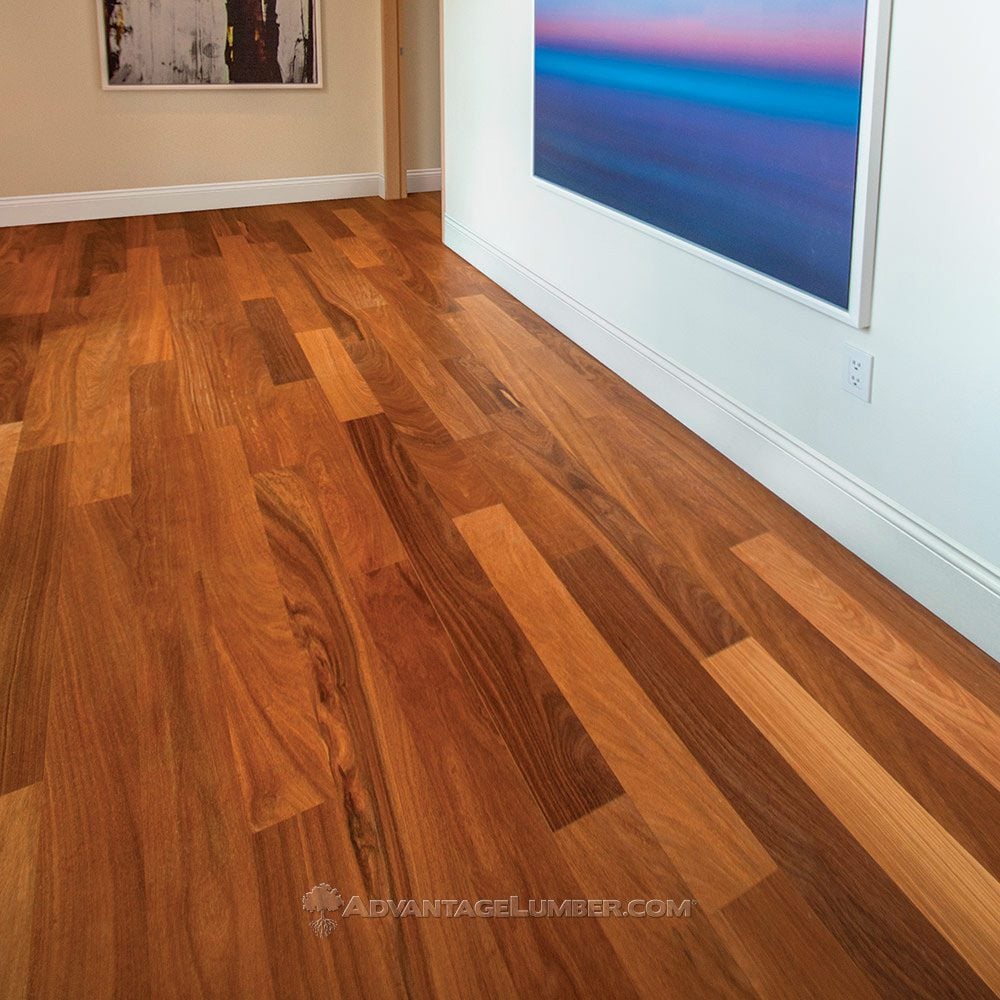When it comes to home renovation or building a new home, selecting the right type of hardwood flooring is essential for both aesthetics and functionality. Hardwood flooring offers a blend of durability, elegance, and timeless appeal, but the decision-making process can be overwhelming.
This blog post will guide you through the key considerations, including the finish of the wood, the construction type, and the choice of wood species, helping you make an informed decision for your space.
Unfinished vs. Prefinished Hardwood Flooring
Unfinished Hardwood Flooring:

- Pros:
- Customization: Unfinished flooring allows you to apply your choice of stain and finish, matching the flooring precisely to your interior decor.
- Uniformity: It provides a uniform, seamless look across the floor, as the sealant fills the gaps between boards during installation.
- Cons:
- Time-consuming Installation: It requires sanding, staining is optional, and finishing after installation, which means more time until you can use the space.
- VOC Emissions: The on-site finishing process may involve higher levels of volatile organic compounds (VOCs) during application. It is usually a good idea to vacate your home while the finish is being applied and curing.
Prefinished Hardwood Flooring:
- Pros:
- Quick Installation: These boards come sanded, stained, and finished from the factory, which significantly reduces installation time.
- Durability: Factory-applied finishes are often more durable with stronger finishes than site-applied alternatives.
- Cons:
- Limited Customization: You’re limited to the stains and finishes available from manufacturers.
Solid vs. Engineered Hardwood Flooring

Solid Hardwood Flooring:
- Pros:
- Longevity: Can be sanded and refinished multiple times over the decades.
- Value Addition: Adds to the resale value of your home, with a rich aesthetic appeal.
- Cons:
- Moisture Sensitivity: Prone to warping and swelling with changes in humidity.
- Limitation on Installation: Generally, not suitable for basements.
Engineered Hardwood Flooring:
- Pros:
- Stability: The layered structure reduces expansion and contraction with changes in humidity.
- Versatility: Suitable for installation over concrete and in basements.
- Cons:
- Wear Layer Variability: The thickness of the top wood layer can vary, affecting the number of times it can be refinished.
Choosing the Right Wood Species
The choice of wood species not only influences the look of your floors but also their durability and maintenance needs. Here’s a look at some popular domestic and exotic species along with their Janka hardness ratings:
Domestic Species:

- Maple: Janka Hardness: 1450. Known for its light, creamy color and subtle grain patterns.
- Walnut: Janka Hardness: 1010. Offers rich, dark tones that can add warmth and elegance.
- Oak: Janka Hardness: White Oak – 1360, Red Oak – 1290. Highly durable and offers a traditional grain pattern with various stain options.
- Cherry: Janka Hardness: 995. Known for its fine, straight grain and reddens over time to a rich patina.
Exotic Species:
- Ipe (Brazilian Walnut): Janka Hardness: 3680. Extremely hard and durable, great for high-traffic areas.
- Tigerwood: Janka Hardness: 2160. Features a dramatic color variation and striking grain patterns.
- Brazilian Cherry (Jatoba): Janka Hardness: 2350. Known for its deep red color and high durability.
- Brazilian Teak (Cumaru): Janka Hardness: 3540. Another extremely hard species, resistant to moisture and wear.
Importance of the Janka Hardness Rating
The Janka hardness test measures the resistance of a wood sample to wear and denting. The higher the number, the more durable the wood. This rating is crucial when choosing hardwood flooring as it affects how durable your floor will stand up to denting from high heel shoes and items being dropped.
Once a floor is dented it makes the finish easier to chip and flake off around the dent. It would also need to be sanded more to get the flooring surface flat enough to remove the dent. This can reduce the number of times your flooring can be sanded and refinished.
Selecting a wood species with a suitable Janka hardness rating ensures that your floors maintain their beauty and durability over time.
Conclusion
Whether you prefer the robustness of solid hardwood or the versatility of engineered hardwood, and whether you choose the charm of domestic woods or the exotic appeal of international species, understanding these fundamentals will help you pick the perfect hardwood flooring for your home. By considering the finish, construction type, and wood species, you can ensure that your flooring choice meets both your aesthetic and functional needs for years to come.

